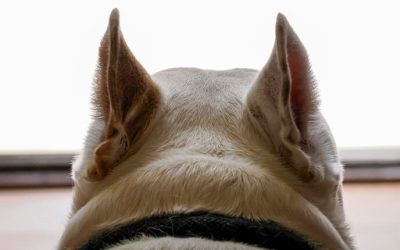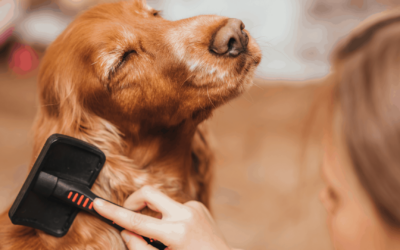Dog Shedding Explained: When Do Dogs Shed the Most?

Shedding is a normal part of life for many dogs—it’s how they keep their coats healthy and regulate body temperature. When old or damaged fur falls out, it paves the way for new growth. Many dog breeds, such as Golden Retrievers, Labrador Retrievers, and Akitas, to name a few, are known to be heavy shedders, but it’s important to know that when shedding becomes excessive, it might indicate a health concern or issues with grooming. Let’s dive into how you can manage your dog’s shedding, keep them comfortable, and ensure their coat stays healthy.
Why Do Dogs Shed? Understanding the Causes
Dogs shed for several reasons, and the biggest factor is seasonal change. As the weather shifts, their coats adapt to the new temperature. This means they shed old hair to make room for a new, more seasonally appropriate coat. But shedding isn’t just about the seasons. Factors like breed, age, hormones, and overall health all play a role in how much and how often your dog sheds.
When Does Shedding Peak? A Quick Guide to Seasonal Changes
Dogs typically shed most during the spring and fall, transitioning between coats for warmer or cooler weather. But, just like your dog’s personality, shedding patterns can vary. Here’s a quick look at what to expect during these times:
- Spring: As temperatures warm, dogs shed their thick winter coats to prepare for summer. This can begin in late winter or early spring and last a few weeks.
- Fall: As the weather cools, dogs shed their lighter summer coats in preparation for a thicker, insulating winter coat. This shedding is usually just as intense as in the spring.
Some breeds, especially double-coated dogs like Huskies and German Shepherds, may shed more during these seasonal transitions. Dogs who live indoors might shed less because their coats don’t need to adjust as drastically to temperature changes.
What About Winter Shedding?
While shedding is most often associated with the warmer months, some dogs shed before winter, too. This is when they grow a thicker undercoat to prepare for the chillier months. It’s completely natural, and can be it with a solid grooming routine.
Tips for Managing Your Dog’s Shedding
Shedding can be a bit much at times, but there are simple ways to keep it under control and reduce the mess:
- Brush Regularly: Brushing your dog’s coat is one of the best ways to manage shedding. Regular brushing removes loose fur and helps distribute natural oils for a healthier coat. Be sure to choose the right brush for your dog’s coat type!
- Bathing: A good bath can help remove loose hair and dander. Use a gentle dog shampoo and conditioner to keep their skin and coat healthy.
- Healthy Diet: A well-balanced diet can play a huge role in your dog’s coat health. Adding omega-3 fatty acids to their meals can help reduce shedding and keep their coat shiny.
- Create a Comfortable Environment: Excessive shedding can lead to mats and discomfort. Regularly grooming your dog can help prevent skin irritation and keep their coat in tip-top shape.
- Consider Professional Grooming: If your dog sheds heavily or struggles with matting, scheduling regular visits with a professional groomer can make all the difference.
How to Reduce Shedding in Dogs & Cats
As Sploot veterinary care team explained in their article: ‘Considering the factors that influence cat and dog shedding, here is a checklist of things that a pet parent can do to reduce shedding:
- Have your pet allergy-tested so that you can avoid giving them food that triggers their allergy.
- Feed your pet a vet-approved diet that provides all the nutrients they need to support a healthy skin and coat.
- Brush or comb your dog’s or cat’s coat frequently to remove the dead hair and encourage healthy growth. Brush pets with thick double coats weekly and long-haired breeds twice a week.
- Give your dog or cat regular baths to remove dander and dead hairs. Bathing also prevents matting and dirt accumulation that can lead to increased shedding. Be sure to use a gentle shampoo that won’t dry out the skin.
- Schedule regular veterinary wellness exams to ensure the early detection of skin parasites, skin diseases, or systemic conditions that can lead to hair loss and balding.’
When to Groom Your Dog: A Simple Guide
Setting a grooming schedule that works for your dog’s breed and coat type can make managing shedding easier. Here’s a basic guide:
- Short-haired breeds (e.g., Beagles, Boxers): Brush once or twice a week to keep loose fur at bay.
- Medium to long-haired breeds (e.g., Golden Retrievers, Afghan Hounds): Daily brushing is best to prevent tangling.
- Double-coated breeds (e.g., Huskies, German Shepherds): Brush weekly during non-shedding seasons but daily during shedding times.
Don’t forget the other grooming basics like bathing, nail trimming, and ear cleaning to keep your dog happy and healthy!

Living with Allergies? Here’s How to Cope with Shedding
Allergies to pet dander can make shedding more challenging. But with the right strategies, you can manage it and still enjoy your dog’s company:
- Regular Grooming: Keep up with brushing and bathing to reduce dander and loose fur.
- Air Purifiers: Use an air purifier with a HEPA filter to help reduce airborne pet dander in your home.
- Allergy Medications: Talk to your healthcare provider about allergy medications that can help alleviate symptoms.
- Create Pet-Free Zones: Designate areas of your home where your dog can’t go, like your bedroom, to reduce allergens in your space.
Tools for Managing Shedding: What You’ll Need
When it comes to managing shedding, having the right tools can make the job much easier:
- Brushes & Combs: Choose slicker brushes, de-shedding tools, and undercoat rakes based on your dog’s coat type.
- Vacuum: A vacuum with a HEPA filter is great for picking up fur and dander from your floors and furniture.
- Shampoos & Conditioners: Opt for dog-specific products to keep their coat clean and healthy.
Professional Grooming: When to Call in the Experts
While regular at-home grooming is key, there are times when professional help is needed. If your dog’s shedding is becoming too much to manage, or if their coat is getting matted, a professional groomer can help. Groomers have the tools and expertise to handle excessive shedding and keep your dog comfortable.



